英语零基础教学课件
- 格式:doc
- 大小:49.04 KB
- 文档页数:3
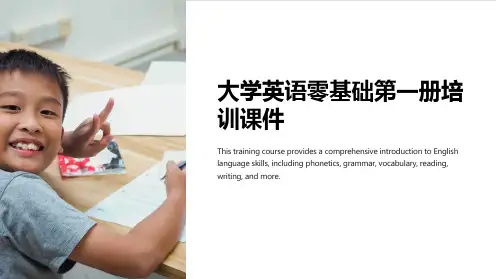
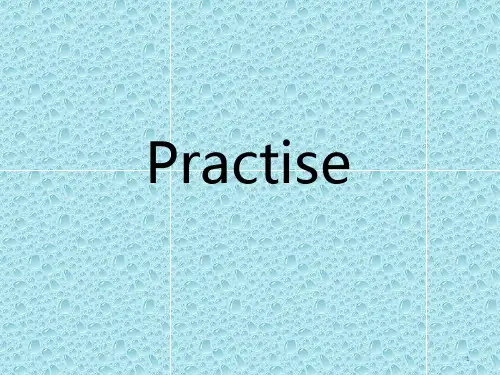

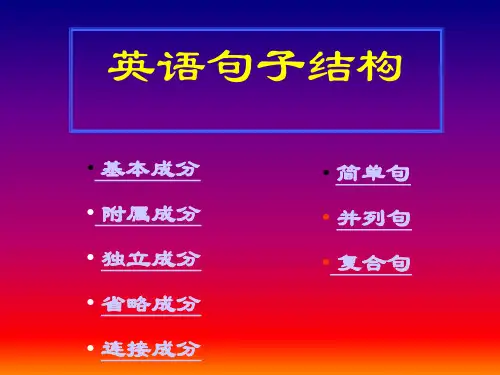
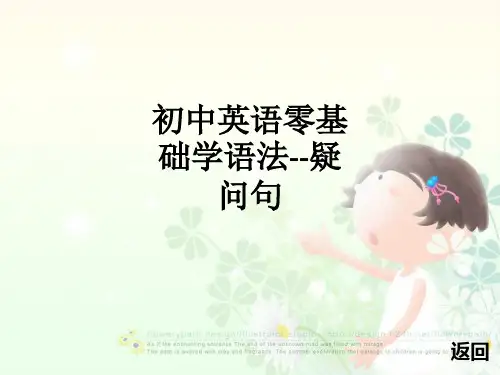
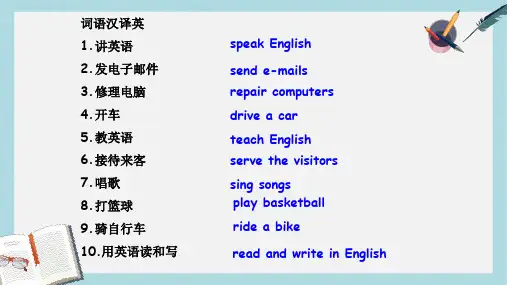



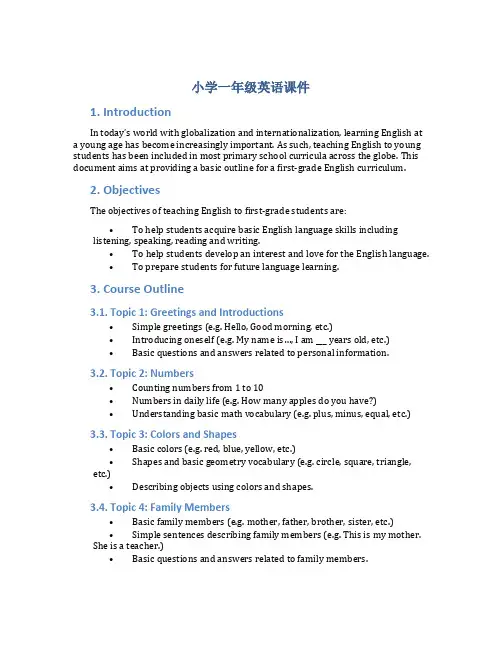
小学一年级英语课件1. IntroductionIn today’s world with globalization and internationalization, learning English at a young age has become increasingly important. As such, teaching English to young students has been included in most primary school curricula across the globe. This document aims at providing a basic outline for a first-grade English curriculum.2. ObjectivesThe objectives of teaching English to first-grade students are:•To help students acquire basic English language skills including listening, speaking, reading and writing.•To help students develop an interest and love for the English language.•To prepare students for future language learning.3. Course Outline3.1. Topic 1: Greetings and Introductions•Simple greetings (e.g. Hello, Good morning, etc.)•Introducing oneself (e.g. My name is…, I am ___ years old, etc.)•Basic questions and answers related to personal information.3.2. Topic 2: Numbers•Counting numbers from 1 to 10•Numbers in daily life (e.g. How many apples do you have?)•Understanding basic math vocabulary (e.g. plus, minus, equal, etc.)3.3. Topic 3: Colors and Shapes•Basic colors (e.g. red, blue, yellow, etc.)•Shapes and basic geometry vocabulary (e.g. circle, square, triangle, etc.)•Describing objects using colors and shapes.3.4. Topic 4: Family Members•Basic family members (e.g. mother, father, brother, sister, etc.)•Simple sentences describing family members (e.g. This is my mother.She is a teacher.)•Basic questions and answers related to family members.3.5. Topic 5: Action verbs•Basic action verbs (e.g. run, walk, jump, etc.)•Simple sentences using action verbs (e.g. I can run fast, She can jump high, etc.)•Describing daily activities using action verbs.3.6. Topic 6: Food and Drinks•Basic food and drink vocabulary (e.g. apple, banana, milk, etc.)•Simple sentences related to food and drinks (e.g. I like apples, She drinks milk for breakfast, etc.)•Basic questions and answers related to food and drinks.4. Teaching MethodologyTeaching English to young children requires a lot of patience, creativity and a variety of teaching methodologies. Keeping this in mind, the following methodologies may be used:•Songs and rhymes•Picture books and flashcards•Games and activities•Role plays and puppet shows•Audio-visual aids5. AssessmentAssessing young English learners requires a different kind of approach. Some of the methods that can be used include:•Observing students during class activities•Listening to students’ speaking and pronunciation skills•Looking through students’ written work and vocabulary retention•Conducting weekly or monthly quizzes and tests6. ConclusionTeaching English to first-grade students requires a lot of effort and dedication, but it can also be an enjoyable experience. With the curriculum and methodologies mentioned above, teachers can create an engaging and fun-filled learning environment for students. As students begin to acquire basic English language skills, they will also develop a lifelong interest in the language and an eagerness to learn more.。

第二课
1.语音部分
单元音音标:
/e/ 小口型,一指宽
/æ/ 大口型,两指宽,嘴角往后咧
b ed[bed] Bad [bæd]
beg [beg] bag [bæg]
pen [pen] pan [pæn]
red [red] best [best] fat [fæt] map [mæp] /ɑ:/ 长元音,大口型
/ ʌ/ 短元音,小口型
ask [ɑ:sk]bus[bʌs]
fast[fɑ:st] cup[kʌp]
dark[dɑ:k]last[lɑ:st]must [mʌst]
love [lʌv] money[ˈmʌni]
双元音音标:
/aɪ/ 过渡
I like China.(双元音要发饱满,否则)
I[aɪ] like[laɪk] China ['tʃaɪnə].
Bike[baɪk] nice [naɪs] fly[flaɪ]
time[taɪm] w hite[waɪt]
/aʊ/ 过渡,老虎叫
How are you? (回答)
How[haʊ]
Sit down
down[daʊn] now [naʊ] out[aʊt] house[haʊs]
辅音音标:
/ k/ 清
/g/ 浊
desk[desk] work[wɜ:k] glass[glɑ:s]gas [gæs]
2.句子的应用和文法
1.How are you?
2.Sit down.
Take a seat, please!
Have a seat, please!
3.what’s your name?
形容词性物主代词:
他的名字叫什么?
他的名字是Tom.
她的名字叫什么?
她的名字是Lucy.
4.What’s your job?
他的工作是什么?
他是老师。
她的工作是什么?
她是商人。
5.一般疑问句
1.你是Lily吗?
2.Mike是美国人吗?
3.John是四十岁吗?
你是Lily。
You are Lily.
Are you Lily?
Yes, I am. No, I am not. Mike是美国人.
Mike is American.
Is Mike American? Yes, he is. No, he is not.。